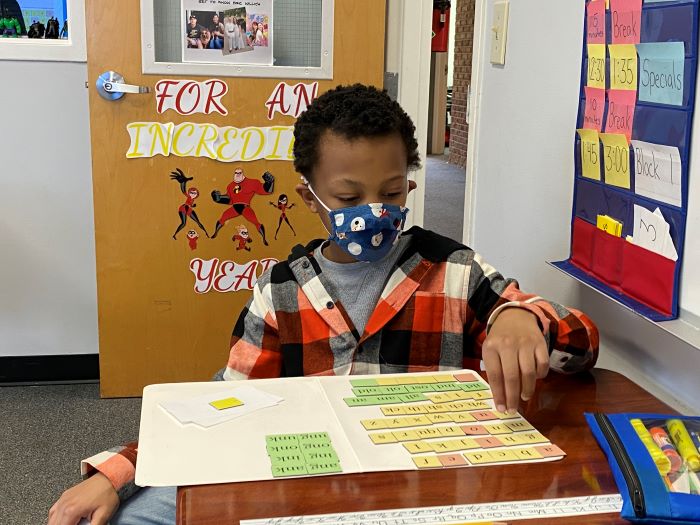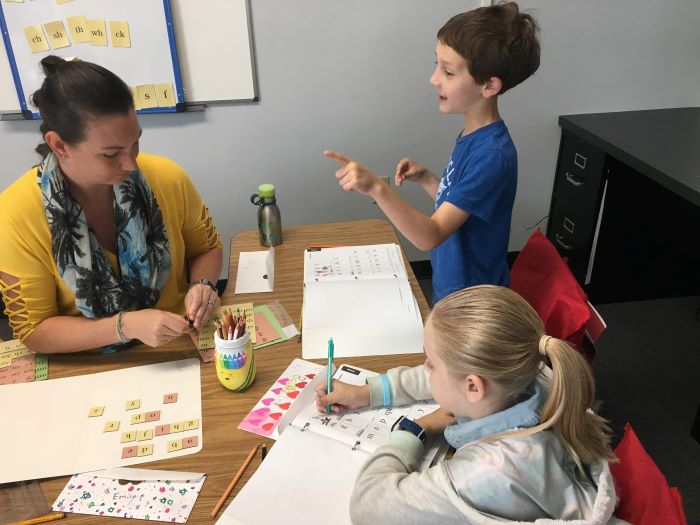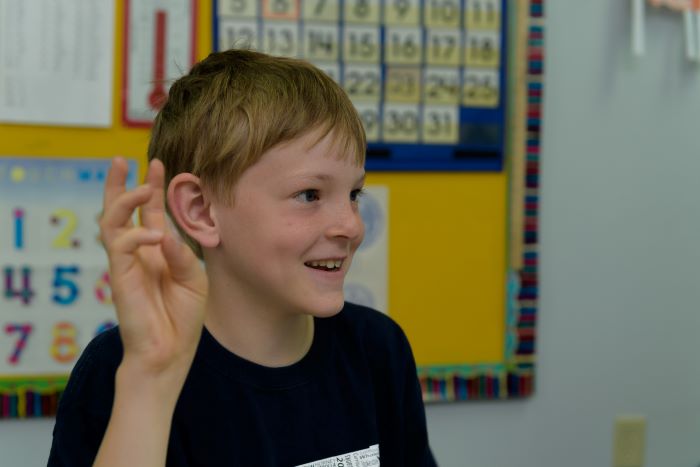Closing the Gap: The Importance of Early Intervention
By Guest Blogger Aimee Picon, Director of Educational Outreach
“The student fell through the cracks.” “He was moved through the system without ever addressing the problem.” “She is in 8th grade now, but never really learned how to read.” As an educator of students with learning differences these are statements that I hear often. As a trainer of teachers on how to educate students with language based learning disabilities and dyslexia, it is frustrating, heartbreaking to hear, and also completely preventable.
In its simplest form, early intervention is just that – intervening early. Obtaining early intervention services can sometimes feel like a mountain to climb for families. It starts with questions about where to even begin, which interventions are the right interventions, who to talk to, and where to seek help and resources. It can sometimes feel like you are wandering around in a very dark forest with lots of trees and no clear path out.
 Why is early intervention so important? We know from research that, “a child with a reading disability who is not identified early may require as many as 150-300 hours of intensive instruction if he is going to close the reading gap… and of course the longer identification and effective reading instruction is delayed the longer the child will require to catch up” (Shaywitz, S. 2003). It can take even longer for students to gain the knowledge they need to achieve grade level reading. Students who are not identified early can end up suffering with what is known as a double deficit. This is because reading aids fluency and fluency aids comprehension. If a child does not have the reading skills to decode and comprehend grade level text, they are missing out on all the additional skills that are gained from reading such as fluency, vocabulary development and content area knowledge. This problem can be considerably more impactful on an older student who has missed many years of the vocabulary and subject area knowledge that is acquired simply by reading.
Why is early intervention so important? We know from research that, “a child with a reading disability who is not identified early may require as many as 150-300 hours of intensive instruction if he is going to close the reading gap… and of course the longer identification and effective reading instruction is delayed the longer the child will require to catch up” (Shaywitz, S. 2003). It can take even longer for students to gain the knowledge they need to achieve grade level reading. Students who are not identified early can end up suffering with what is known as a double deficit. This is because reading aids fluency and fluency aids comprehension. If a child does not have the reading skills to decode and comprehend grade level text, they are missing out on all the additional skills that are gained from reading such as fluency, vocabulary development and content area knowledge. This problem can be considerably more impactful on an older student who has missed many years of the vocabulary and subject area knowledge that is acquired simply by reading.
At Noble Academy, we use the Wilson Reading SystemⓇ. This is a research based curriculum designed to teach students with dyslexia and other language based learning disabilities how to read using multisensory processes and direct, intensive instruction. The student progresses through the program based on mastery of skills. It requires a graduate level of teacher training to implement with fidelity.
 There are dyslexia laws in North Carolina requiring an early screening for students in K-2 to ensure that they are on the path to reading success. When students do not perform well on these assessments and are identified as at-risk, an intervention protocol should begin. Not all interventions are created equally or matched appropriately with the student’s needs, so I typically encourage families to ask to see the progress monitoring for the intervention and to become informed about what intervention is being used and what the research behind it says.
There are dyslexia laws in North Carolina requiring an early screening for students in K-2 to ensure that they are on the path to reading success. When students do not perform well on these assessments and are identified as at-risk, an intervention protocol should begin. Not all interventions are created equally or matched appropriately with the student’s needs, so I typically encourage families to ask to see the progress monitoring for the intervention and to become informed about what intervention is being used and what the research behind it says.
Ultimately, the parent or guardian is the child’s best advocate. No one knows their child better. It can sometimes seem like waiting a year to see if a child matures into academic success or retaining the student may be a consideration, but another year of what didn’t work the first time is not often successful and retention in this type of model is not proven by research to be effective. It is more likely that the student needs to learn in a different way and sometimes in a different environment.
 What we do know is that intervening early is the best chance for faster remediation and putting a student on the path to academic success. It can also help to avoid the types of difficulties that children sometimes develop as a result of being unsuccessful such as anxiety, depression and low self-esteem. Closing the gap early does more for the student’s academic progress, social well being and future than one may realize.
What we do know is that intervening early is the best chance for faster remediation and putting a student on the path to academic success. It can also help to avoid the types of difficulties that children sometimes develop as a result of being unsuccessful such as anxiety, depression and low self-esteem. Closing the gap early does more for the student’s academic progress, social well being and future than one may realize.
To learn more about Noble Academy’s free reading screenings for children 4-11, tutoring services, and their full-day academic programs for students with ADHD and learning differences in grades 2-12, visit nobleknights.org.
Shaywitz, S. (2003). Overcoming Dyslexia: A New and Complete Science Based Program for Reading Problems at any Level. New York, NY: Knopf.
*Sponsored by Noble Academy

I love Wilson! I use it when I’m tutoring and also when I was homeschooling awesome program and noble is a great school!!
awesome program and noble is a great school!!
My son transferred in second grade from a Greensboro charter school that stressed standardized test scores to Noble Academy’s child-centered Wilson curriculum. He is thriving. The difference in his reading fluency and comprehension has been incredible, but the biggest reward is how much his self-confidence has soared. We love Noble Academy!